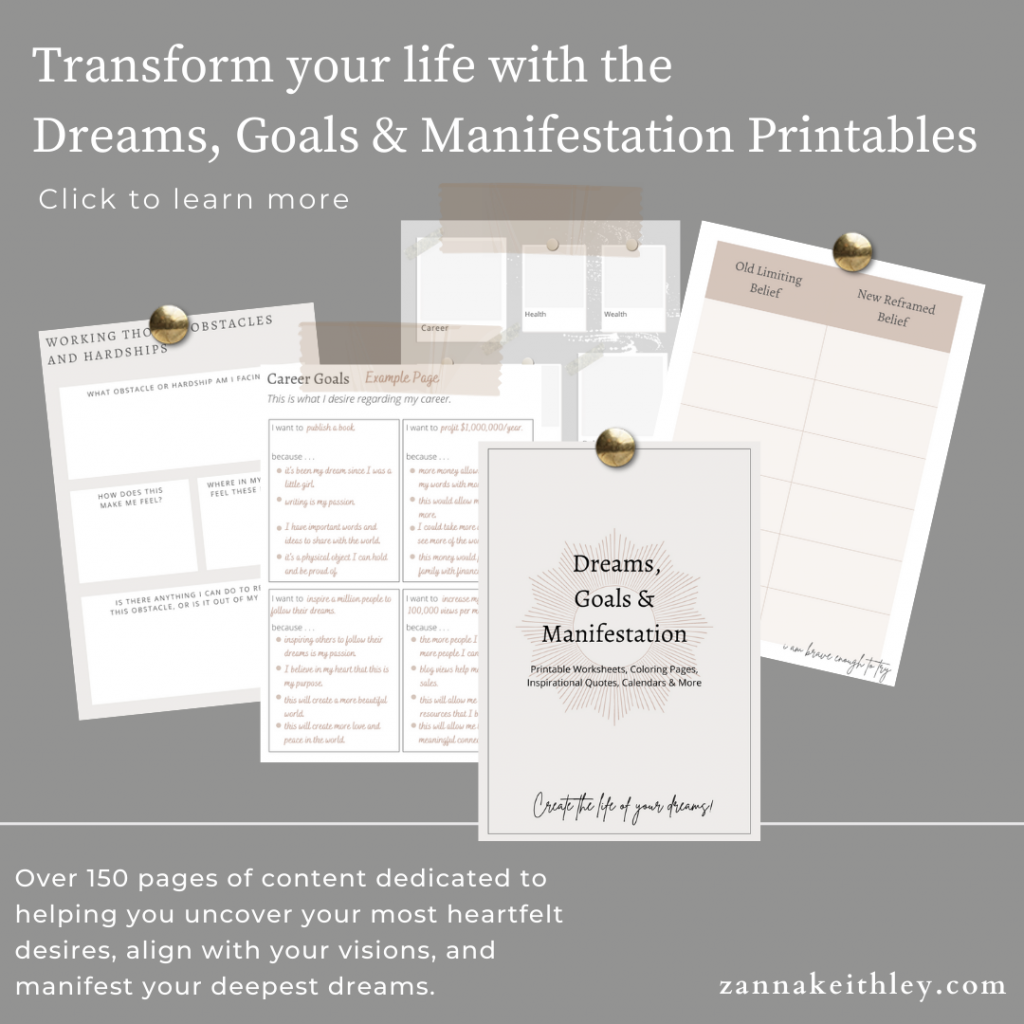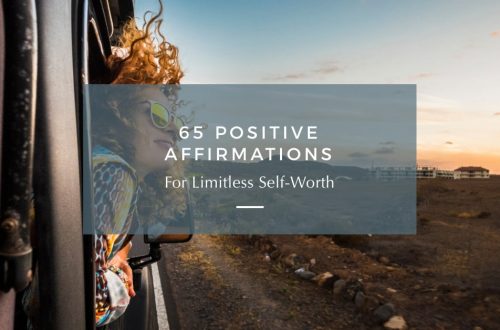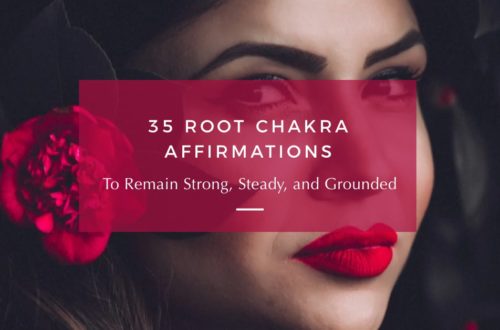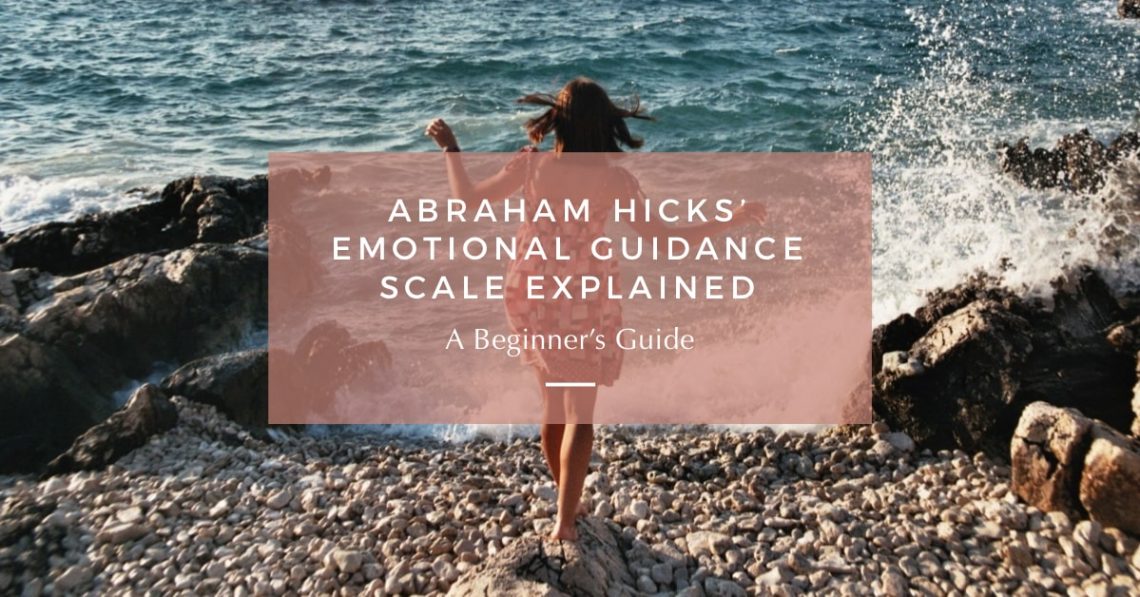
Abraham Hicks’ Emotional Guidance Scale Explained
Abraham Hicks’ Emotional Guidance Scale is a powerful way to raise your vibrations and elevate your emotions in a healthy and profound manner. Below, learn all about the Emotional Guidance Scale, including why and how to use it and practices you can utilize to lift your emotions.
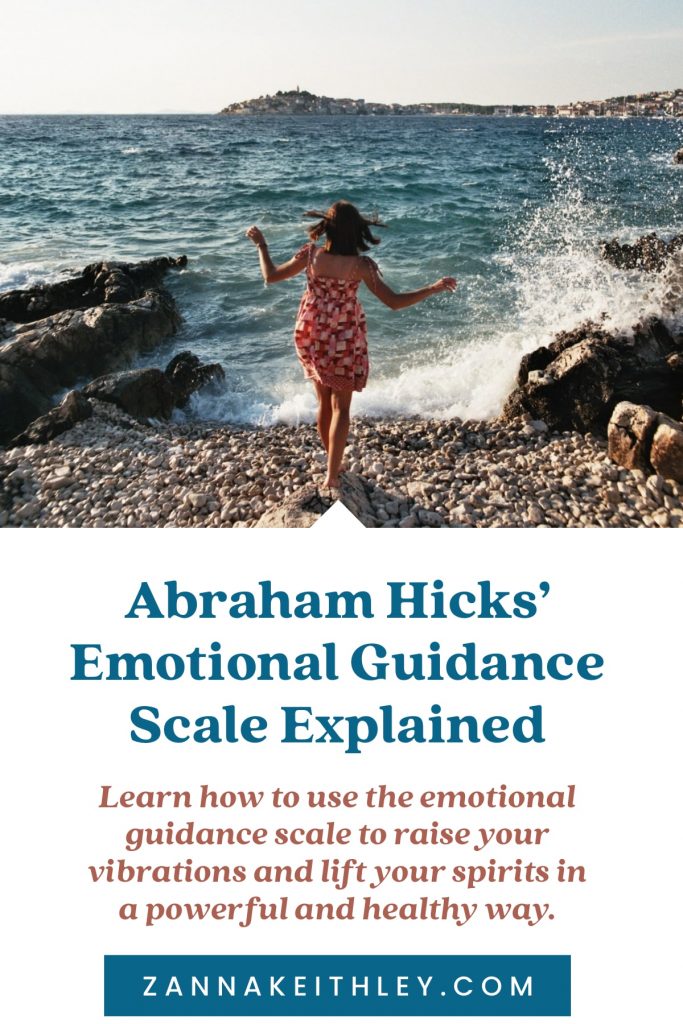
What is the Emotional Guidance Scale?
I first learned about the Emotional Guidance Scale when reading Esther and Jerry Hicks’ Ask and It Is Given: Learning to Manifest Your Desires. In Chapter Twenty-Two of this book, we’re introduced to the Emotional Guidance Scale, a list of commonly felt emotions that range from emotions that we typically associate with being the most positive, such as Joy, Love, and Empowerment, to those we usually deem most negative, such as Depression and Grief.
In between those strong emotions are a bunch of other commonly felt emotions, such as Contentment, Boredom, Disappointment, and Doubt.
The Emotional Guidance Scale is used to assess where your emotions are now and to always reach for a better feeling thought. For example, if I assessed my emotions right now, I might say I’m pretty content. Content isn’t a bad place to be, but what if I could feel even better? What practices could I do to lift my emotions? What thoughts feel good to me right now? I might look at my vision board and visualize all my desires coming true. I imagine what it will feel like when all the dreams on my vision board are my reality, and I allow myself to feel those feelings right now. And it works: I’ve moved from Contentment to Optimism.
The Emotional Guidance Scale is kind of like a ladder. Optimism might turn into Positive Expectations, which turns into Enthusiasm, then Passion, and finally, I’m feeling Joy, Love, and Freedom.
Below is the Emotional Guidance Scale in full. In this post, I’ll explain why you would use it, how to use it, and methods to utilize to keep climbing the ladder so you can align with the highest vibrations possible.
- You May Also Like: 44 Abraham Hicks Affirmations For Joy And Manifestation

Why Use the Emotional Guidance Scale
Have you heard the phrase raise your vibrations?
Personally, I see these words several times a day on Instagram, Pinterest, and other various websites. As I discuss in this post, I’m actually not entirely sure how I feel about the phrase. I love the positivity in it, and that’s why I continue to use it, but I think when we say that we’re raising our vibrations, we’re leaving out something pretty monumental: the fact that you, yourself, are already the essence of high vibrations.
What do I mean by this?
Those highest vibrations at the top of the Emotional Guidance Scale? Joy, Knowledge, Empowerment, Freedom, Love, and Appreciation. Those are your very foundation. Those feelings are who you are at your core. They can never be taken away from you, not even when you’re having a bad week or month or even year. (Insert Friends reference here.)
So you’re not truly raising your vibrations; you’re releasing anything that weighs you down, leaves you feeling low, and takes away from who you truly are. You’re getting rid of the bad stuff that causes you to lose sight of yourself.
You are a high-vibrational being. High vibrations are your essence, being, and birthright. And all those emotions at the top of the Emotional Guidance Scale? You deserve to be aligned with them every single day.
Which is why the Emotional Guidance Scale is a profound way to get yourself into that good-feeling state you were always meant to be in. And if you believe in the Law of Attraction and manifestation, you know the importance of high vibrations. At the heart of manifestation is the belief that what we give out into the world is what we receive in return. So if you emit joy, love, and positivity into the world, you’ll receive even more of this right back to you. (Not to mention, you are worthy and deserving of a life where you feel joyful and loved and positive every single day.)
The Emotional Guidance Scale allows you to gauge where your current emotions are and reach for an improved feeling. And this is important. You see, often times, when someone uses the phrase raise your vibrations, we automatically think we should go all-out and feel joyful and passionate and all that good stuff. But what happens if you’re feeling grief or depression? What if you’re in a state of complete despair?
Are you supposed to force yourself to jump straight to joy? (Again, if you believe in the Law of Attraction, you might think you’re supposed to be feeling joyful and that your current state is inherently wrong.)
No. Absolutely not. In fact, this can be detrimental to your healing and often makes a person feel even worse. For one, jumping from depression to joy would be nearly impossible, so if you’re not able to get yourself into that state of joy and love, you might feel like you somehow failed. And forcing yourself to make this jump likely means you’re suppressing emotions, which keeps the negative emotions within your body, not allowing you to fully heal so you can release them.
The Emotional Guidance Scale offers a gentler solution. It reminds you that you don’t have to jump straight into a high-vibe feeling you’re not ready for. Rather, you can continually reach for a better feeling emotion, climbing the ladder one rung at a time.
- You May Also Like: What Does It Mean to Manifest Something? (An Introductory Guide to Manifestation)
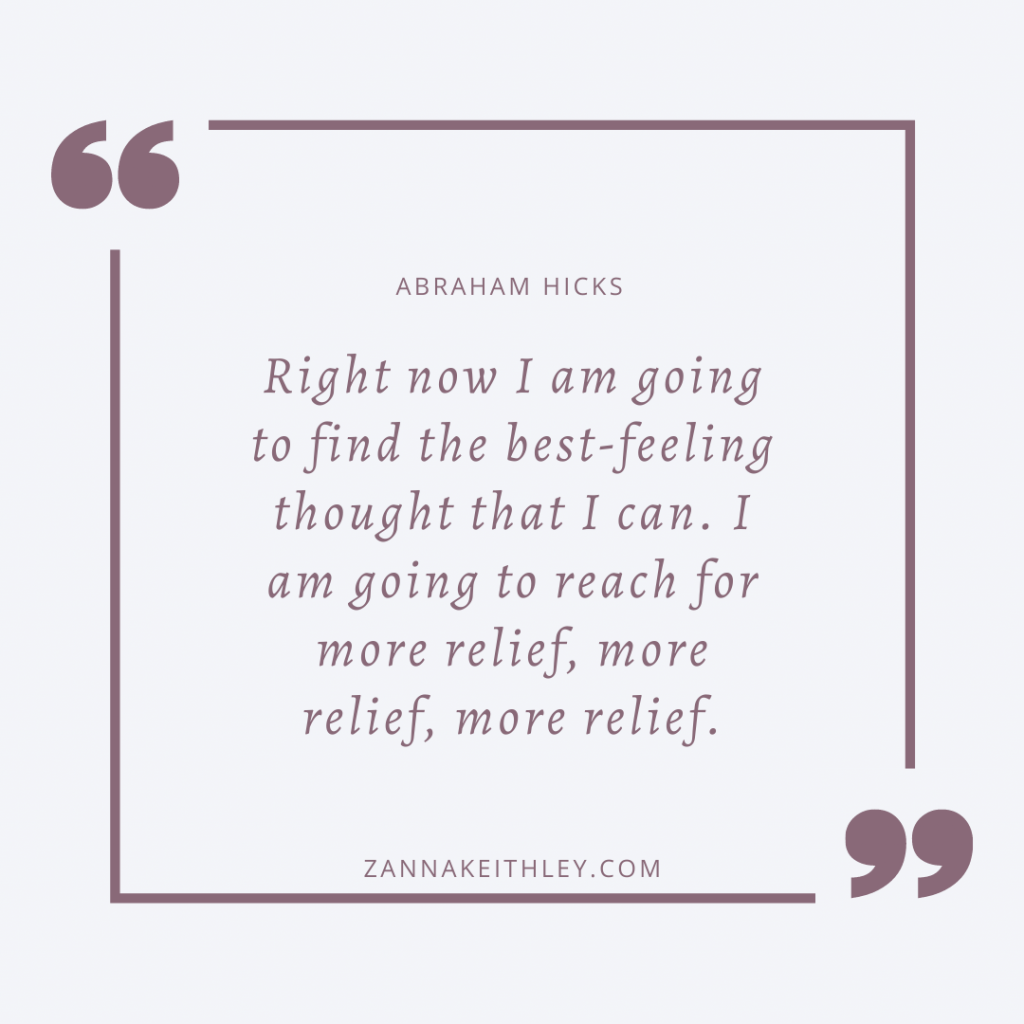
How to Use The Emotional Guidance Scale
I do want to make one important point before we go any further: the words on the Emotional Guidance Scale aren’t actually all that important. They shouldn’t be used as guidelines or instructions for how you should feel next. For example, if you’re in a state of Anger, you don’t need to look at the scale and say, “Okay, next rung up is Discouragement, then Blame. Those should be my next feelings.”
Rather, you should simply focus on reaching for an improved feeling, no matter where you are and no matter what the “next rung up” looks like. Focus less on the words on the list and more on how you feel and the actions you can take to help yourself feel better. Another reason you shouldn’t focus too much on the words on the list is because these words might mean different things to different people. My personal relationship with feelings of Guilt and Unworthiness might be different than yours. My perception or definition of those emotions might also differ.
So how do you use the Emotional Guidance Scale? It’s less of a tool to instruct you on what you should feel next and more of a tool to help you gauge where you are now and to feel empowered when you recognize that you have the ability to lift yourself up.
It all starts with this thought, from Ask and It Is Given: “Right now I am going to find the best-feeling thought that I can. I am going to reach for more relief, more relief, more relief.”
So let’s say that I’m at a point in my life where I don’t want to get out of bed in the morning. I lack purpose and direction. It feels like I’m eternally numb and that nothing will ever change that. I recognize that I’m experiencing depression.
What is the better feeling thought here?
It seems strange to think about, but hatred, revenge, anger, and blame are all better feeling thoughts.
So if I think about past experiences and start feeling angry about events that have occurred, and then I start blaming others for those events, at least I’m starting to feel again. And I can recognize that feeling anything is better than the numbness I experienced before. Maybe other people won’t understand why it’s a good thing that I’m feeling angry, but that’s okay. They don’t have to understand. As long as I understand that I’m at a better feeling than I was before, that’s all that matters.
I’ll let myself feel the anger for a while, as feeling this emotion is part of my healing journey, but I won’t stay there forever. I feel the anger, work through it, and finally, I release it. Now, I find that I’m in a state of disappointment, but I’m not angry. And disappointment is a better feeling thought than anger.
This is where the Emotional Guidance Scale comes in. You don’t have to look at it every day and assess your feelings, but spend some time consciously recognizing that you’re at a better feeling than you were before. Why? Because this recognition allows you to feel empowered. You recognize that you have some control over your feelings. As explained in Ask and It Is Given, every step higher up the scale speaks to your feeling of self-empowerment, and every step lower speaks to your feeling of disempowerment.
When you first start using the Emotional Guidance Scale, you likely will have to make a more conscious effort to gauge your emotions. It may not feel quite as natural when you’re just beginning. However, with time, it won’t just become easier, but you’ll possess a deeper and more profound understanding of your own inner world. You’ll be able to easily recognize your emotions and understand the methods you can utilize to get yourself into a better feeling state.
- You May Also Like: What Is The Art Of Allowing? A Complete Guide
Methods to Climb the Emotional Guidance Scale
So how do you get yourself in a better feeling state? Different methods will work for different people, and it may change depending on where you are on the scale. For instance, a practice that may work for you when you’re feeling bored may not work so well when you’re feeling depressed.
Below are some suggestions for practices you can utilize. You can try some of these and see what works best for you. You also might already know of some methods that help you raise your vibrations and lift yourself into a better feeling state.
Gratitude
Gratitude is one of the quickest ways to shift your mindset from one of negativity to one of positivity. It’s also a way to change your perspective from lack to abundance. When you choose gratitude, you’re no longer focusing on what you don’t have but rather on what you do have. And when you can look around you (and within) and see abundance in every area of your life, more abundance is drawn to you.
There are numerous ways to approach a gratitude practice, so find one that works best for you. Simply listing 3 things in your current world that you’re grateful for might be enough to lift you into a better feeling state. You might also look around your current environment and express appreciation for everything that is around you. You can also choose to express gratitude for all that’s within you: your heart, your breath, your talents and abilities, all the cells in your body that make you you. You can also choose to utilize a gratitude journal to help lift you into a better feeling state. (You can check out my gratitude journal prompts here.)
As mentioned above, some practices that work well when you’re already in the upper half of the Emotional Guidance Scale may not work as well when you’re in the lower half. For instance, when you’re feeling depressed, grieving, or fearful, this gratitude practice may not work as well. And that’s okay! There are other practices that may help when you’re feeling those lower emotions.
- You May Also Like: How to Raise Your Vibration in 30 Seconds (Or Less)
Visualization
I once heard the term visualization referred to as “intentional daydreaming” and it’s been my favorite way to describe this practice ever since. Visualization can mean a lot of things, but for purposes of lifting your vibrations, visualization is a tool you can use to align with the feelings of your dream life (and your highest self). While my favorite way to utilize this practice is when I have ten to twenty minutes to sit in quiet meditation, you can also do this when you only have a few minutes.
If you’re meditating, find a quiet spot where you won’t be interrupted. I sometimes like to play soft instrumental music in the background. Visualize a day in your perfect, dream life. How do you feel when you wake up in the morning? Where are you? Who are you with? What kinds of things do you do during your day? See all the details of this perfect day play out before you, and allow yourself to feel the feelings of this beautiful dream like it’s happening right now. If you imagine that in your perfect life, you’ll feel peaceful, joyful, abundant, loved, and free, then allow yourself to feel those things right now.
You might also choose to utilize a vision board to help you in your visualizations. If you’re on the go, create a My Future album on your phone and save photos to it that represent your dream future. Look at it when you want to boost your mood and allow yourself to feel the positive feelings of having everything in those pictures right now.
Scripting
Scripting is similar to visualization, but instead of visualizing your dreams in your mind, you’re writing them down on paper. In a journal or on a sheet of paper, describe your dream life, and don’t hold back. No dream is too big. The key here is to write in the present tense, as if everything you dream of is happening right now. So instead of saying, “I will be . . .” you’d say, “I am . . .”
Nature
When nothing else helps, I can always return to nature to guide me to better feeling thoughts. Walking outside, standing in the sunshine, or even a practice like gardening can help to connect you with your inner self, a higher power, and the universe as a whole. When I’m walking, I try to focus on my breath, and instead of drowning under my anxious thoughts, I pay attention to the world around me: the sky, the trees, the birds, the flowers, and everything in my outer environment that represents beauty and life. I’m a bit of a speed walker, so I’ve found that this works best if I consciously slow down and take my time. Where’s your favorite place in nature to be? See if you can go there for a little while. (And if you can’t, are you able to visualize it and experience the feelings of being there within?)
Other Ideas
- Meditation
- Yoga
- Journaling
- Self-Care Activities
- Creative Activities
- Chakra Healing
- Talking to someone you trust
- Affirmation Cards
- Gentle movement that feels good to you
- Breathing Exercises
For more practices, I’d definitely recommend checking out Ask and It Is Given, which gives a list of 22 practices to help you elevate your emotions and lift your spirits.
Final Notes
I mentioned this above, but I think it’s worth returning to and emphasizing: there may be people in your life who won’t understand this process. They may not understand why you’re glad to feel angry and even enraged. They may not get why doubt or worry are improvements over what you were feeling before.
And that’s okay.
Nobody else has to understand.
The important thing is to not let others get to you. You may hear things like, “Just be happy!” Someone may try to make you feel bad for choosing anger. Don’t let them.
Remember that you are allowed to feel whatever you need to feel in order to heal. You don’t want to stay in an angry or worried state forever, but you also don’t have to falsely force yourself to move past it before you’re ready.
Feel what you need to feel as you continue to work toward the better feeling thought.
Do you have any other questions about Abraham Hicks’ Emotional Guidance Scale? What practices help you get into a better feeling state? Share your questions and tips in the comment section below!
For more on raising your vibrations and manifesting your dream life, plus a daily dose of positive affirmations and self-love, be sure to connect with me on Instagram and Pinterest!


Zanna Keithley is an author, poet, and social media content creator who writes short prose dedicated to inspiring readers to follow their dreams, trust their intuition, and create beautiful and fulfilling lives. You can find her original writing on Instagram @zannakeithley.



